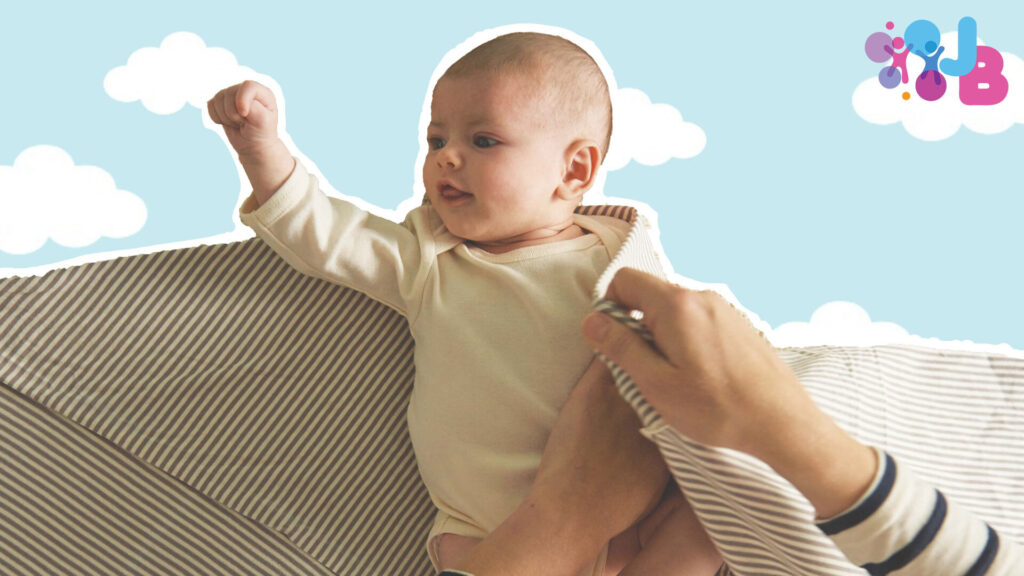A common source of information for new parents is from the nurses in the hospital where they deliver their child. If you wrap a blanket securely over your baby’s body, it can help simulate the mother’s womb, which can be soothing to your newborn. According to the American Academy of Pediatrics (AAP), when done correctly, swaddling a baby can be a valuable strategy for calming infants and even promoting sleep in young children. The simplicity of swaddling a newborn is what makes it so appealing. Learning how to swaddle a baby step by step takes time and patience, but learning it is probably less complicated than you might believe at first. Finding swaddle techniques and building a swaddle routine that both you and your child are comfortable with is all it takes to successfully take care of a baby.
What are the best blankets to swaddle a baby?
Soft muslin blankets make swaddling babies not only simple but also adorable. If you’re wondering what the best technique to swaddle a baby is, look no further than these lovely blankets. It is not necessary to be difficult to answer how to wrap a baby in a blanket. In reality, learning the ins and outs of swaddling a baby with a muslin blanket is one of the most efficient and safest methods of calming and soothing a newborn.
Pediatricians recommend swaddling tactics and proper swaddle procedures so that new parents can provide their newborns and infants with a safe place to sleep while they sleep. A muslin blanket is one of the most comfortable blankets to use while learning how to swaddle a baby because muslin is soft to the touch and highly breathable, which means your baby will not overheat. A tiny amount of stretch is also provided by muslin, making it a less restricting cloth for popular swaddling procedures. Following the swaddling procedures provided below will ensure that both the baby and the parents are comfortable throughout nap and sleep!
Why is swaddling a baby significant?
Many parents report that swaddling their child appears to help relax them, allowing them to settle more quickly and sleep for more extended periods. Despite this, there has been little study to back up these views.
In addition, it is believed that swaddling reduces the number of unwanted wake-ups induced by a baby’s startle reflex. As a baby’s legs and arms are always secured, they never get startled or scared.
The concept is that the first three months of your baby’s existence are a difficult transition phase for them as they make their way out of the womb and into the world outside. Considering this, it stands to reason that babies would like being wrapped lightly (but not too tightly) to feel comfortable, much as they did in the womb.
What do the doctors say about swaddling?
It is still a heated debate among some experts and doctors whether swaddling is healthy for an infant or not. Consequently, if you’re thinking about swaddling your infant, make sure you always adhere to safe swaddling standards to keep your child secure.
What are the risks associated with swaddling a baby?
There are several risks associated with swaddling a baby. Not correctly swaddling a baby can put them at risk of becoming injured. Also, covering your baby in multiple layers of warm and uncomfortable fancy blankets can result in overheating the baby’s body.
If you are breastfeeding your baby, it is not recommended that you wrap them because breastfeeding causes them to become heated quickly, and they may overheat.
Another point to consider is that routine swaddling may muffle the baby’s voice, which may cause the baby’s response to be delayed. According to research, babies who are swaddled eat less frequently and suckle less well, and their limited arm movement has been found to influence their arousal pathways.
How to swaddle a baby?
Swaddling a baby may appear to be a difficult task at first, but it is only a matter of a few simple steps.
The following instructions will show you how to wrap a blanket around your baby’s shoulders. Here are some pointers on how to deal with a restless baby and how to swaddle a baby:
Step 1: Lay your baby on a flat surface:
Place the swaddling blanket on a level surface in the shape of a diamond or square, whatever position or type you prefer. One corner of the cloth should be pointing in the upwards direction. Fold the top corner of the clothing down.

Step 2: Keep your baby face-up on the blanket:
The baby’s head should be slightly higher than the folded edge of the blanket, and their body should reach straight down toward the bottom corner of the blanket so that the baby can breathe properly. The face isn’t covered with a blanket.

Step 3: Adjust your baby’s arms accordingly:
Taking the left side of the blanket, wrap it around their left arm and torso until she is completely covered. Tuck the blanket under their right arm and across her back to keep them warm. Your baby’s left arm will be covered at this moment, but their right arm will be free.
It is, therefore, still your baby’s preference of how they want to be swaddled: either both arms in, or out, or one in and one out.
Step 4: Bring the bottom part of the swaddle blanket upward:
Make an inward fold over your baby’s torso and tuck that corner under the first fold, just under her chin, to keep the blanket from falling. Put a straight arm around your baby’s right shoulder and bring the right side of the blanket over her body, tucking it under her left side.

Step 5: Wrap the baby with the swaddle blanket:
Twist the bottom of the blanket loosely and tuck it underneath your baby’s shoulders.
Keep in mind that If the baby is too little, the swaddle should be snug but not too tight. If you put two or three fingers between your baby’s chest and the blanket, the blanket should be loose around her hips so that she is free to move her legs.
Conclusion:
Swaddling is a moving process if done correctly. A parent should be keeping in mind several things before swaddling a baby, like not to wrap them in superheated blankets, not restricting their breathing or sight in any way, and not using such clothing they may cause an allergy to the baby.








